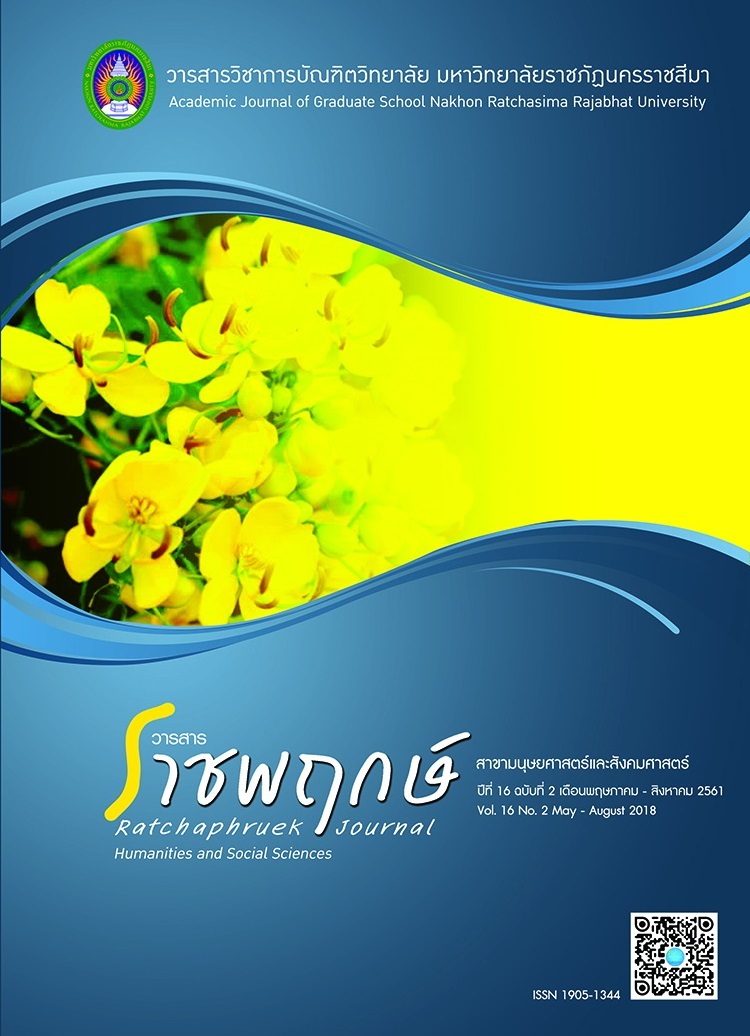The Development of Tourism Public Relations in Makluea Mai Subdistrict Administrative Organization Makluea Mai Subdistrict, Sungnoen District, Nakhon Ratchasima
Main Article Content
Abstract
The purposes of this research aimed 1) to study tourists’ behaviors concerning their tourism media exposure and their satisfaction, 2) to investigate tourists’ needs, and 3) to study current situations and ways to develop tourism public relations. The first 2 purposes were considered as quantitative research with 400 tourists as their sample groups and questionnaire was employed as a research tool. Data collected then would be analyzed statistically by assessing and analyzingto the programs. Statistic used in this research included percentage, average and standard deviation.However, the third research purpose was the qualitative one which collected data from chairpersons, staff working in Subdistrict Administrative Organization (SAO) and 11 tourism leaders by using a focus group discussion as a tool. Data obtained from the collection would be qualitatively analyzed in order to establish possible ways to develop tourism public relations.
The results has showed that 1) in terms of tourists’ behaviors concerning tourism media exposure, tourists obtained attractions’ information from their family members at the highest average (3.79) and they were satisfied with media available online at the highest average (3.20), 2) tourists proposed their needs concerning direction to destinations at the highest (3.95) and those information should be available
online(3.93), and 3) when considering current situations related to tourism public relations, SAO has rarely publicized tourism information with few connections with nearby attractions and provided no information related to available souvenirs. For possible ways to develop tourism public relations, tourism leaders asked SAO public relations via web site and publicized media which contained tourism and souvenirs information available on both websites in many languages and advertising boards representing attractions’ unique features. Villagers living in the community should be a part in creating those tourism media.


